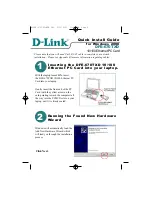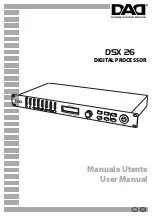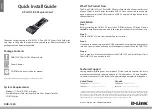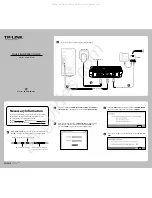
Using the WBPN Wireless-N Bridge for Phone Adapters Configuration Utility
Configuring Wireless Parameters
Cisco WBPN User Guide
25
2
STEP 3
Choose the Network Type:
•
Infrastructure—The WBPN is connected to the wireless network through a
wireless router or access point (AP).
•
Ad-hoc—The WBPN directly communicates with other devices in the ad-
hoc network. Each device must be configured with the same SSID and
channel number in order to communicate with other devices in the ad-hoc
network.
STEP 4
If you chose the ad-hoc network type, you can configure the following parameters:
•
Channel width—Choose to manually configure the channel bandwidth for
Wireless-N connections. When it is set to 20MHz, only the 20MHz channel is
used. When it is set to 40MHz, Wireless-N connections will use the 40MHz
channel but Wireless-B and Wireless-G connections will still use the 20MHz
channel. If there is no Wireless-B nor Wireless-G broadcast, selecting 40Mhz
will enhance the throughput. This field is unavailable if you chose the
infrastructure network type.
•
Control Sideband— Specify if the extension channel should be in the Upper
or Lower sideband. This field is not configurable if you chose the
infrastructure network type.
•
Channel Number—Select the appropriate channel from the list. Select the
same channel on which the other ad-hoc devices in the network are
broadcasting. This field is not configurable if you chose the infrastructure
network type.
•
Data Rate—Select the data transmission speed. This field is not
configurable if you chose the infrastructure network type.
STEP 5
Wi-Fi Multimedia (WMM) is a component of the IEEE 802.11e wireless LAN
standard for quality of service (QoS). It specifically supports priority tagging and
queuing. It is enabled by default when the band is set to N, G+N, or B+G+N. You
can choose to disable WMM if the band is set to B, G, or B+G.
STEP 6
In the Encryption field, choose the type of security for the WBPN:
•
None—Security is not enabled on your wireless device. (Not
recommended.)
•
WEP—Wired Equivalent Privacy encryption. (WEP is a weak form of
encryption and is not recommended.) If you choose WEP, choose the type of
authentication (Open System, Shared Key, or Auto). In the Key Length field,
choose the length of the encryption bit. 128-bit encryption is more secure









































